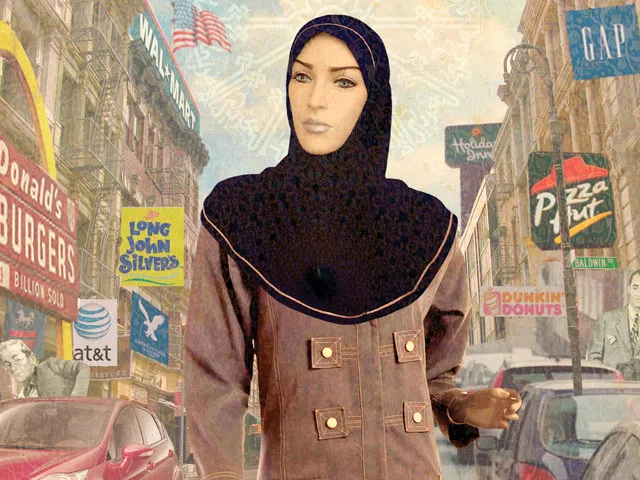On Sept. 24, 2001, Newsweek published a story about threats, intimidation and violence carried out on Arab Americans in the two weeks since a mostly Saudi team of terrorists crashed airplanes into New York City and the Pentagon.
“In Washington, D.C., Muslim women have had hijab scarves snatched from their heads. A mosque in San Francisco was splattered with pig’s blood. A bomb threat at a mostly Arab school in Dear born, Mich., sent frightened teens running into the streets.
“The cruel irony,” the story concludes, “is that many of those bearing the brunt of the fallout came to this country to escape terrorism.”
Indeed, Arabs have been emigrating to the United States for more than 100 years. The first large wave, around 1916, included Syrians fleeing the Ottoman Empire. The second began after Israel’s Six-Day War in 1967.
Today, Arab Americans account for around 1.2 million of the country’s citizens, with most living in California or Michigan. They are one of America’s fastest-growing ethnic groups, yet they remain largely misunderstood — especially in the wake of 9/11, but even before that.
“One of the big challenges involves the media and the portrayal of Arabs and Arab Americans as a monolithic group,” says Jennifer Holsinger, an assistant professor of sociology at Whitworth University. “We don’t see the differences portrayed, so we don’t have a good grasp of who Arab Americans are.”
She’s been trying to change that. Since early 2001, Holsinger has been studying the immigrant experience of Arab Americans, looking specifically at where they settle down and how their residential patterns correlate to their upward mobility and socioeconomic status — in short, how they’ve assimilated into American culture, as compared to othergroups.
“You can assimilate culturally. That’s usually the first stage of assimilation. That’s learning the language, adapting to new styles of dress,” Holsinger says. “I’m looking at more structural assimilation, where groups start to enter into the institutions of a society. It’s very hard to break into neighborhoods and jobs and networks.”
The results of this study are published in Holsinger’s new book, Residential Patterns of Arab Americans. In it, she looks at Arab-American populations in Chicago, Detroit, Los Angeles and New York. Using quantitative analysis of census records from 1990 and 2000, she found that Arab Americans are less segregated and have greater access to “quality” neighborhoods than either Hispanics or African Americans. Compared to other minority groups, she writes, “Arab Americans experience a great deal of advantage.”
She chalks this up to their long history of immigration and a relatively strong socioeconomic status, among other things. But she’s quick to point out in the book that they’re still, generally, a stigmatized group. “Arab Americans face an uphill battle with Arab stereotypes in the media and resulting perceptions held by other Americans … as difficult to get along with and poor English-speakers.”
That disadvantage may be increasing, too — suggested, she writes, by falling property values in neighborhoods where Arab Americans have moved in, and a trend towards Arab Americans living less frequently among more affluent white ethnic groups and more often in poorer neighborhoods dominated by other ethnic groups.
Her findings also support the correlation between socio-economic status and living in nice, white neighborhoods. And yet, she found, some Arab Americans who could afford to live in those neighborhoods didn’t, whether out of preference or social barriers into the neighborhoods.
“We’re all so affected by the neighborhoods we grow up in,” she says. “So it’s very helpful if you’re studying groups of people to know the residential context … Race is still extremely important in shaping the life chances of people and influencing where we live.”
But she also found that there is no universal truth among the umbrella group of Arab Americans — that making generalizations about a diverse population can be dangerous. “Recent immigrants, characterized by low levels of human capital, are found in different locations than assimilated Arab Americans with higher socioeconomic status,” she writes, suggesting nationality might also be a factor. “Arab arrivals from Iraq, the largest sending country in 2000, and Arab Americans who arrived from Lebanon a century ago exemplify the extreme differences within this population.”
Holsinger relishes the change to dig through data now being collected as part of the 2010 census, as it may give clues to the effects of 9/11. In general, though, she believes segregation may be lessening.
“But pretty slowly,” she says. “It’s still pretty extreme. We still live in a very segregated society. I don’t want to be overly optimistic about race relations, but yeah, there’s reason to believe that hopefully, if we can push past our fears — which at the moment seem to be driving our personal decisions and our policies — then we can live in a more integrated society.”



















